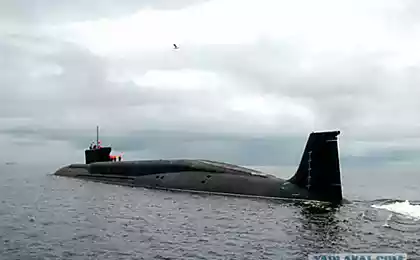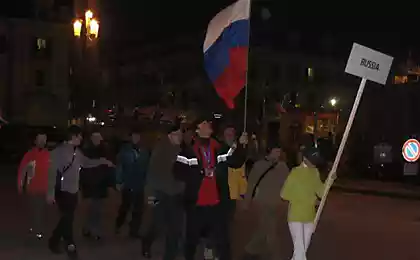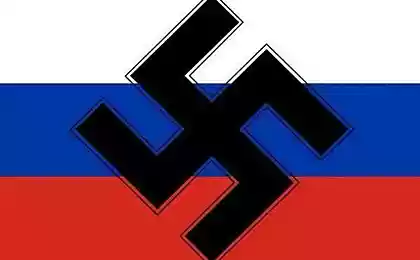188
Hawaii could have been Russian
Of all the places that Russia had a chance to annex, the most exotic were, without a doubt, the Hawaiian Islands.
Discovered by James Cook in 1778, Hawaii was known to Russian navigators since 1804, when the archipelago was visited by the circumnavigation of I. F. Kruzenshtern and Yu. F. Lisyansky on the ships “Hope” and “Neva”. In 1815, off the coast of the island of Kauai (pictured) crashed Russian ship "Bering", was there to buy food. Washed ashore ship with cargo, which was estimated at 100 thousand rubles, was captured by the king of the island of Kaumualia. To return the ship and goods, the head of the Russian-American company A. Baranov sent an armed expedition to Hawaii on the ship "Discovery", in parallel to the archipelago was sent with a special mission Baron Georg Anton Schaeffer.
This character is worth mentioning. Born in Münnerstadt, Schaeffer studied pharmacology in Munich, became a doctor in Würzburg, moved to Russia in 1808, studied botany and minerals, but by nature was an adventurer. Schaeffer first came to Oahu and befriended King Kamehameha, became his family's doctor, and, in his own words, even cured Queen Kaaumana of a severe fever. However, after the Russian ships arrived on the islands, relations between Schaeffer and the king broke down, talk of trade relations and the station stopped. Seeing that there was nothing else to do, Schaeffer in May 1816 went to Kauai (the Russians called him Atuvai), to rescue "Behring".
When Schaeffer arrived at Atuvai, something surprising happened: the king of Kaumualia, vassal Kamehamea, announced that he was not only ready to return the captured ship and conclude a treaty with the Russian-American company, but also humbly asked “His Majesty Emperor Alexander Pavlovich ... to take his mentioned islands under his protection” and promised to be forever faithful to the “Russian scepter”. But Kaumuali hoped with the help of the Russians not only to gain independence from Kamehameha. In July, he signed a secret treatise with Schaeffer to conquer all of Hawaii in exchange for a trade monopoly. Having concluded the contract, Schaeffer sent copies of the agreements to Novo-Arkhangelsk and St. Petersburg, and himself, without waiting for a reply, began to settle on the island: “in the course of 14 months he built on Atuvai with the help of data from the king of the islanders in the Vegmey valley several houses for the station and set up gardens, and the king gave a stone structure for the store; on his orders, the governor of the province in which the Hannarei harbor, solemnly handed it over to Schaeffer with 30 families inhabiting it.” He examined this harbour, the Vagmeya River, the lakes and all the location, laid down on three hills of the fortress, calling one Alexandrovskaya, another Elizabethan and the third name Barclay, and the valley of Hannarei at the request of the king called by his name Shefferova. To the construction of these fortresses, the king gave his people. This province is abundant with small rivers, rich in fish, fields, mountains and in general the location is fascinating, the soil of the land is the most reliable to plant grapes, cotton paper, sugar cane, of which he planted several, starting gardens and vegetable gardens for many tender fruits. The harvest of them assured Schaeffer of the great benefits that this place and all the islands in general can bring to Russia, and even calculated the interest from the crop he saw from his planting.
Excessive haste did not play into the hands of the enterprising German. First, a reply came from Novo-Arkhangelsk, forbidding Sheffer to make deals with King Kaumualia and depriving him of military support. Then the disgruntled Americans, with the support of King Kamehameha, began to dislodge Schaeffer from the islands, built their own station on Kauai and began to buy up land, plantations and goods promised to the Russians. In addition, they began to threaten King Kaumualia that if he did not drive the Russians from Kauai, "they will come to him 5 American ships and kill both him and the Indians." All the Americans in the Russian service left Schaeffer, it was pointless to resist, and in June 1817, on two ships, Schaeffer and the remaining Russians sailed from Kauai to Oahu.
In August 1817, when Schaeffer’s adventure had already collapsed, his victorious reports finally reached St. Petersburg. However, the Russian government in the person of Emperor Alexander I and Foreign Minister Nesselrode, after much deliberation, rejected the proposal of the Hawaiian king for citizenship: “The Emperor will deign to believe that the acquisition of these islands and their voluntary admission into his patronage not only can not bring Russia any significant benefit, but, on the contrary, in many respects is associated with very important inconveniences.” Alexander I’s plan was not to provoke Great Britain into seizing the disintegrating Spanish colonies and not to quarrel with the Americans, who showed great interest in the region.
The Russian-American company, having received losses of 200,000 rubles, fired Schaeffer, who went to St. Petersburg and tried to convince the government of the benefits of seizing the Hawaiian Islands. However, neither he nor the Russian consul in Manila, P. Dobell, who visited Hawaii in 1819-1820 and enlisted the support of the deceased Kamehameha’s son, Kamehameha II, could not persuade the Emperor to accept their point of view. Later, Russian sailors arrived in Hawaii only to replenish food. O. E. Kotzebou, who visited the archipelago during Schaeffer’s tricks, and again came there in 1824-1825, wrote that the islanders received Russian sailors “preferably before all the Europeans who lived here, everywhere and all of us caressed.” We had no reason to be dissatisfied.”
Source: interest-planet.ru
Discovered by James Cook in 1778, Hawaii was known to Russian navigators since 1804, when the archipelago was visited by the circumnavigation of I. F. Kruzenshtern and Yu. F. Lisyansky on the ships “Hope” and “Neva”. In 1815, off the coast of the island of Kauai (pictured) crashed Russian ship "Bering", was there to buy food. Washed ashore ship with cargo, which was estimated at 100 thousand rubles, was captured by the king of the island of Kaumualia. To return the ship and goods, the head of the Russian-American company A. Baranov sent an armed expedition to Hawaii on the ship "Discovery", in parallel to the archipelago was sent with a special mission Baron Georg Anton Schaeffer.
This character is worth mentioning. Born in Münnerstadt, Schaeffer studied pharmacology in Munich, became a doctor in Würzburg, moved to Russia in 1808, studied botany and minerals, but by nature was an adventurer. Schaeffer first came to Oahu and befriended King Kamehameha, became his family's doctor, and, in his own words, even cured Queen Kaaumana of a severe fever. However, after the Russian ships arrived on the islands, relations between Schaeffer and the king broke down, talk of trade relations and the station stopped. Seeing that there was nothing else to do, Schaeffer in May 1816 went to Kauai (the Russians called him Atuvai), to rescue "Behring".
When Schaeffer arrived at Atuvai, something surprising happened: the king of Kaumualia, vassal Kamehamea, announced that he was not only ready to return the captured ship and conclude a treaty with the Russian-American company, but also humbly asked “His Majesty Emperor Alexander Pavlovich ... to take his mentioned islands under his protection” and promised to be forever faithful to the “Russian scepter”. But Kaumuali hoped with the help of the Russians not only to gain independence from Kamehameha. In July, he signed a secret treatise with Schaeffer to conquer all of Hawaii in exchange for a trade monopoly. Having concluded the contract, Schaeffer sent copies of the agreements to Novo-Arkhangelsk and St. Petersburg, and himself, without waiting for a reply, began to settle on the island: “in the course of 14 months he built on Atuvai with the help of data from the king of the islanders in the Vegmey valley several houses for the station and set up gardens, and the king gave a stone structure for the store; on his orders, the governor of the province in which the Hannarei harbor, solemnly handed it over to Schaeffer with 30 families inhabiting it.” He examined this harbour, the Vagmeya River, the lakes and all the location, laid down on three hills of the fortress, calling one Alexandrovskaya, another Elizabethan and the third name Barclay, and the valley of Hannarei at the request of the king called by his name Shefferova. To the construction of these fortresses, the king gave his people. This province is abundant with small rivers, rich in fish, fields, mountains and in general the location is fascinating, the soil of the land is the most reliable to plant grapes, cotton paper, sugar cane, of which he planted several, starting gardens and vegetable gardens for many tender fruits. The harvest of them assured Schaeffer of the great benefits that this place and all the islands in general can bring to Russia, and even calculated the interest from the crop he saw from his planting.
Excessive haste did not play into the hands of the enterprising German. First, a reply came from Novo-Arkhangelsk, forbidding Sheffer to make deals with King Kaumualia and depriving him of military support. Then the disgruntled Americans, with the support of King Kamehameha, began to dislodge Schaeffer from the islands, built their own station on Kauai and began to buy up land, plantations and goods promised to the Russians. In addition, they began to threaten King Kaumualia that if he did not drive the Russians from Kauai, "they will come to him 5 American ships and kill both him and the Indians." All the Americans in the Russian service left Schaeffer, it was pointless to resist, and in June 1817, on two ships, Schaeffer and the remaining Russians sailed from Kauai to Oahu.
In August 1817, when Schaeffer’s adventure had already collapsed, his victorious reports finally reached St. Petersburg. However, the Russian government in the person of Emperor Alexander I and Foreign Minister Nesselrode, after much deliberation, rejected the proposal of the Hawaiian king for citizenship: “The Emperor will deign to believe that the acquisition of these islands and their voluntary admission into his patronage not only can not bring Russia any significant benefit, but, on the contrary, in many respects is associated with very important inconveniences.” Alexander I’s plan was not to provoke Great Britain into seizing the disintegrating Spanish colonies and not to quarrel with the Americans, who showed great interest in the region.
The Russian-American company, having received losses of 200,000 rubles, fired Schaeffer, who went to St. Petersburg and tried to convince the government of the benefits of seizing the Hawaiian Islands. However, neither he nor the Russian consul in Manila, P. Dobell, who visited Hawaii in 1819-1820 and enlisted the support of the deceased Kamehameha’s son, Kamehameha II, could not persuade the Emperor to accept their point of view. Later, Russian sailors arrived in Hawaii only to replenish food. O. E. Kotzebou, who visited the archipelago during Schaeffer’s tricks, and again came there in 1824-1825, wrote that the islanders received Russian sailors “preferably before all the Europeans who lived here, everywhere and all of us caressed.” We had no reason to be dissatisfied.”
Source: interest-planet.ru
Colorado couple lose 127 kilograms of weight for two
Kakapo parrot - the most unusual parrot in the world + video























